Physical Address
304 North Cardinal St.
Dorchester Center, MA 02124
Physical Address
304 North Cardinal St.
Dorchester Center, MA 02124
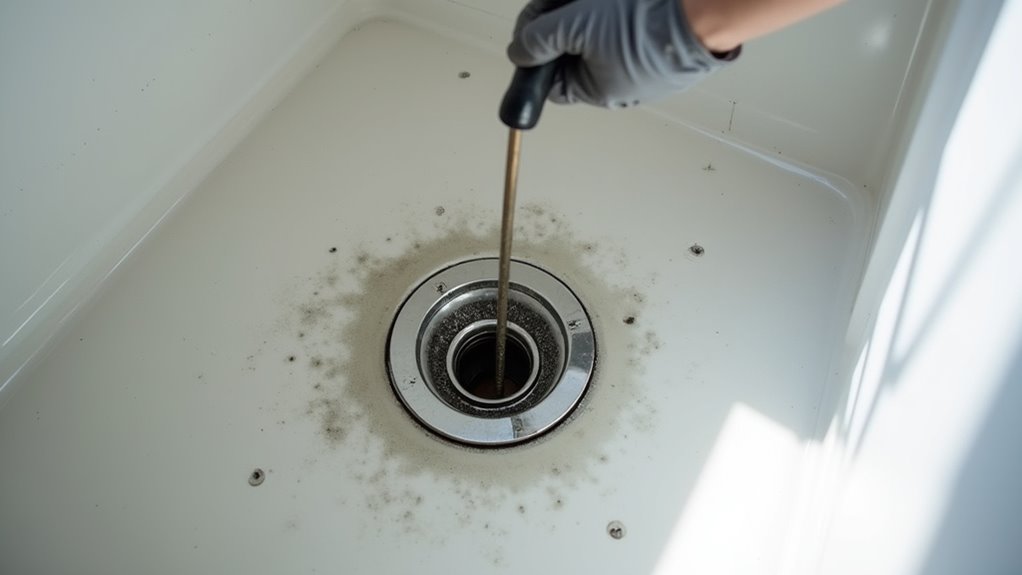
Identify why your RV shower won't drain and discover seven proven solutions that will get your water flowing again.
When your RV shower won’t drain, you’re facing one of the most frustrating problems in mobile living. You’ll likely encounter this issue at some point, whether you’re a weekend warrior or full-time RVer. While a clogged shower drain might seem like a simple problem, it can stem from several different causes, each requiring its own solution. Understanding these common issues and their fixes won’t just solve your current drainage problem—it’ll help you prevent future clogs and protect your RV’s plumbing system.
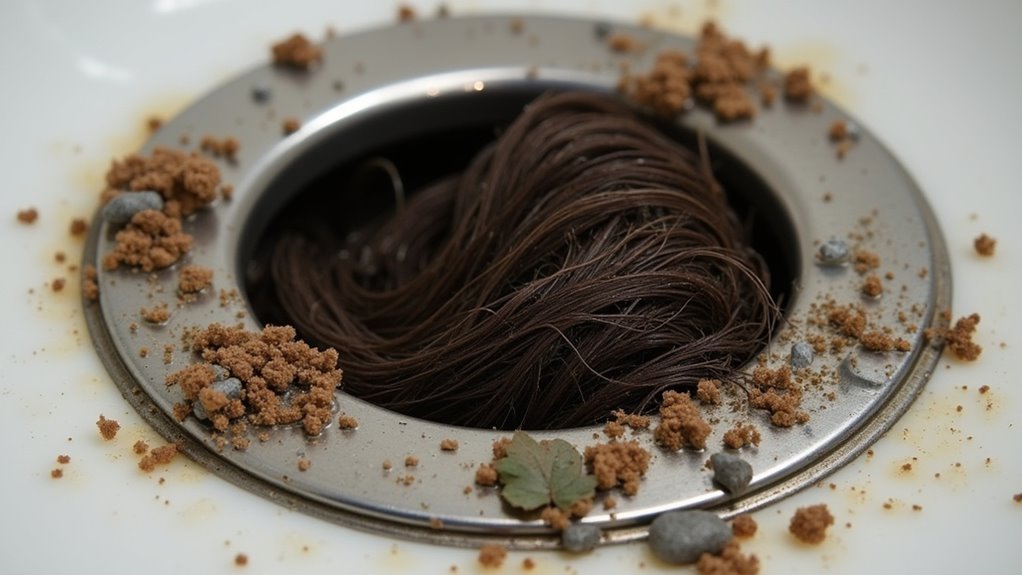
When it comes to RV shower drain problems, hair and physical debris are the primary causes of clogs.
You’ll typically find hair clumps collecting near the drain entrance or in the P-trap, where they combine with dirt, sand, and other particles to create stubborn blockages. Soap scum accumulation can worsen these blockages over time.
To prevent these issues, you’ll want to install a drain cover or strainer that catches hair before it enters your plumbing system.
A simple drain cover or strainer is your first line of defense against RV shower clogs and future plumbing headaches.
It’s also smart to brush your hair before showering and rinse your feet before stepping in, as this reduces the amount of debris that reaches your drain.
For maintenance, regularly remove trapped hair from the drain cover and clean the shower floor to prevent buildup.
If you’re already dealing with a clog, you’ll need to address both the P-trap and drain entrance.
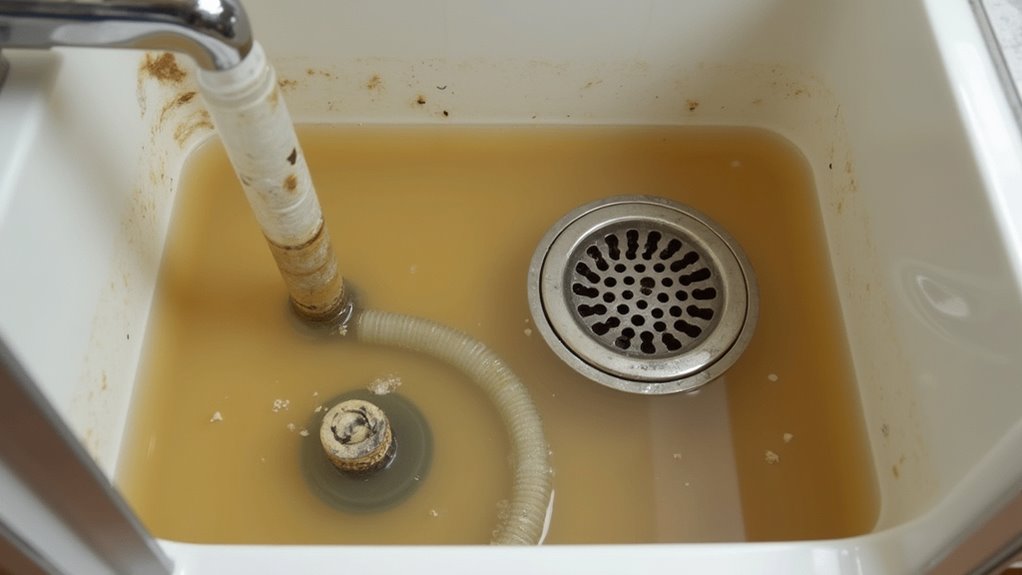
Because grey water tanks collect all the waste water from your RV’s sinks and shower, they can quickly become full without proper monitoring and maintenance.
When your tank reaches capacity, you’ll notice water backing up into your shower or sinks, often accompanied by unpleasant odors.
Long showers, leaky plumbing, and inadequate tank size are common causes of rapid tank filling. Accumulated soap scum and debris from daily use can also restrict proper drainage and accelerate filling.
If you’re not hooked up to a sewer connection, you’ll need to be especially mindful of your water usage. Regular tank level checks and immediate dumping when full are essential to prevent backflow issues.
Check your plumbing seals and connections for leaks, as compromised seals can lead to water damage in your RV’s basement area.
Use mild cleaners periodically to break down grease and debris that can cause clogs.
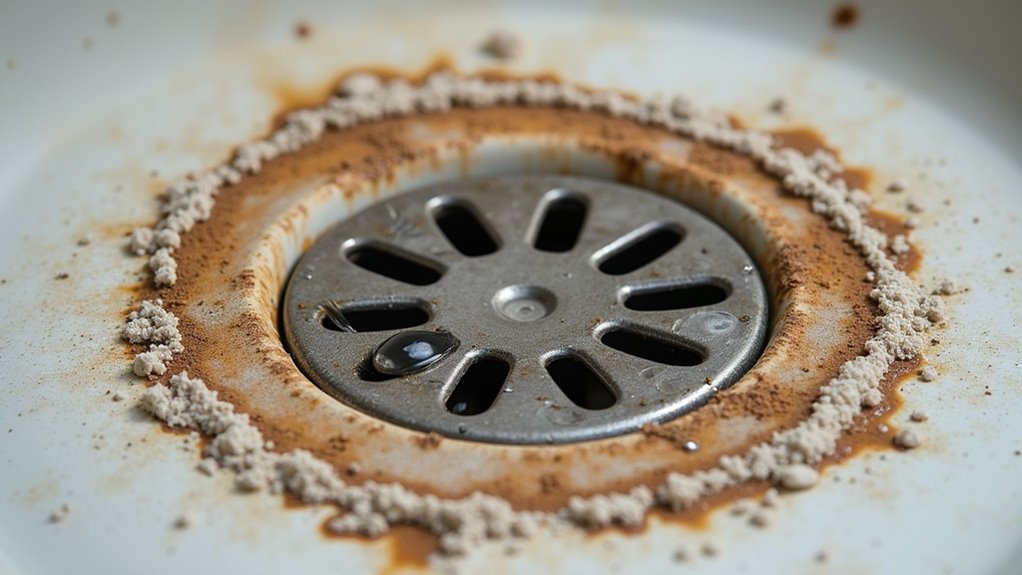
Hard water passing through your RV’s shower drain can create stubborn mineral deposits that gradually choke off water flow.
These calcium and magnesium deposits form limescale, which sticks to pipe walls and narrows the drainage path, leading to slow draining or complete blockages.
Limescale buildup from mineral deposits gradually constricts pipes, turning normal drainage into a slow trickle or complete stoppage.
You’ll need to take preventive steps to avoid mineral buildup. Regular cleaning and maintenance is crucial to prevent mineral deposits from forming and hardening inside your plumbing system.
Install a water softener system, use chemical descalers regularly, or clean with vinegar solutions to break down existing deposits.
You can also filter incoming water to reduce mineral content before it enters your RV’s plumbing system.
If you’re already dealing with mineral blockages, try pouring hot water or vinegar down the drain to dissolve the deposits.
For severe cases, you might need professional cleaning or pipe replacement to restore proper drainage flow.
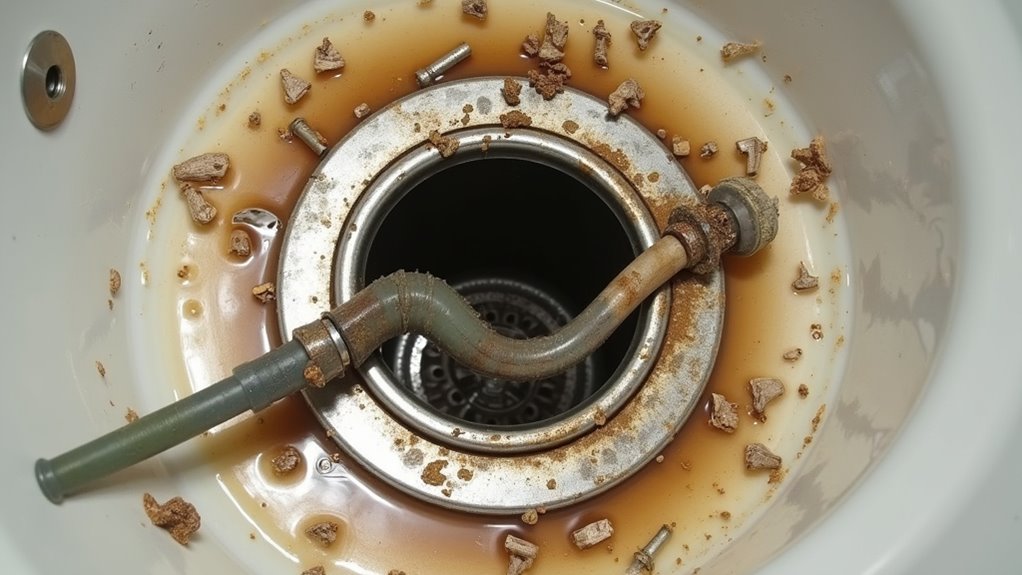
Mishandling drain tools in your RV’s shower can create serious problems that go beyond the original clog. When you use pliers or wrenches incorrectly, you’ll risk damaging pipes and fittings, leading to costly leaks.
Using a worn-out plunger or kinked snake can make the situation worse by pushing clogs deeper into the plumbing system. Regular baking soda and vinegar treatments can help prevent the need for aggressive tool use altogether.
To prevent tool-related issues, you’ll need to inspect your drain tools regularly for signs of wear and damage. Store them properly in a dry place, and replace any tools that show significant deterioration.
If you’re unsure about proper tool usage, don’t hesitate to consult user manuals or watch tutorial videos. Remember that using the wrong tool for the job can cause more harm than good, potentially turning a simple clog into an expensive repair.
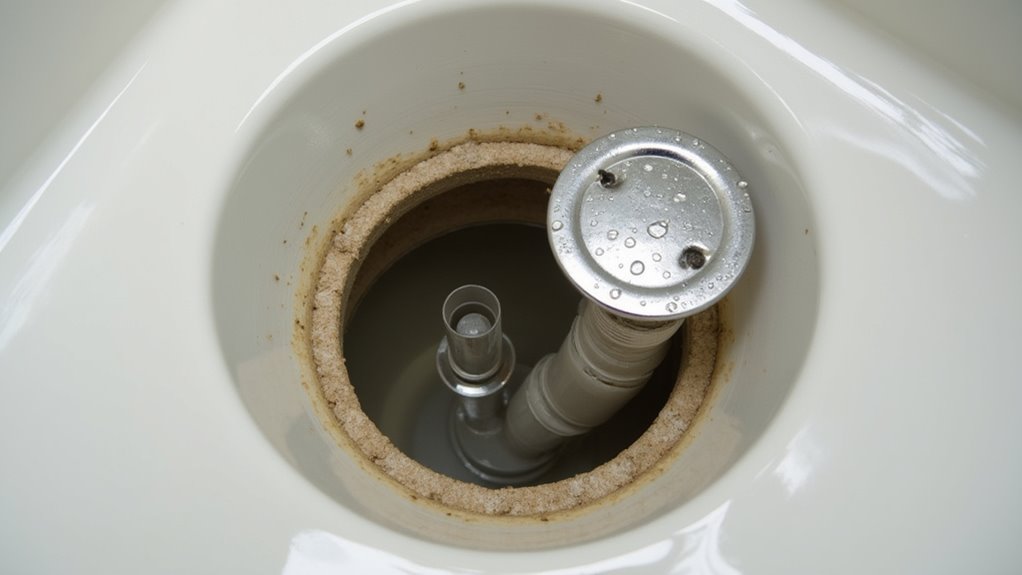
When choosing between waterless traps and traditional P-traps for your RV shower, you’ll need to understand their fundamental differences.
Waterless traps use rubber duckbill valves to block sewer gases, while traditional P-traps rely on standing water. For RVs, waterless designs typically work better since they won’t freeze or evaporate. Products like the Hepvo valve kit offer an excellent low-profile solution for tight installation spaces.
Waterless traps offer superior RV performance with freeze-proof rubber valves, eliminating common P-trap problems like water evaporation and freezing.
If you’ve got a traditional P-trap, watch for cracks and leaks caused by road vibrations. The compression fittings often loosen during travel, and over-tightening them can make problems worse.
You’ll want to check connections regularly and use pipe thread tape for better sealing.
Limited space under RV showers can lead to complex plumbing layouts that affect drainage.
Make sure your drain pipes maintain proper slope and alignment to prevent water from pooling rather than flowing freely.

Beyond the basic plumbing layout, check valves play an essential role in your RV shower’s drainage system. When these valves malfunction, you’ll notice slow drainage, water backing up, and unpleasant odors seeping into your living space. In cold weather conditions, winterizing antifreeze can cause valve flaps to become sticky and unresponsive.
The valve’s flap can degrade over time, stick in position, or become misaligned, preventing proper water flow.
To fix check valve issues, you can start by cleaning out debris and testing the flap movement.
If problems persist, replacing the valve or upgrading to a specialized sanitary waste valve like HepvO will restore proper drainage and prevent future backflow problems.
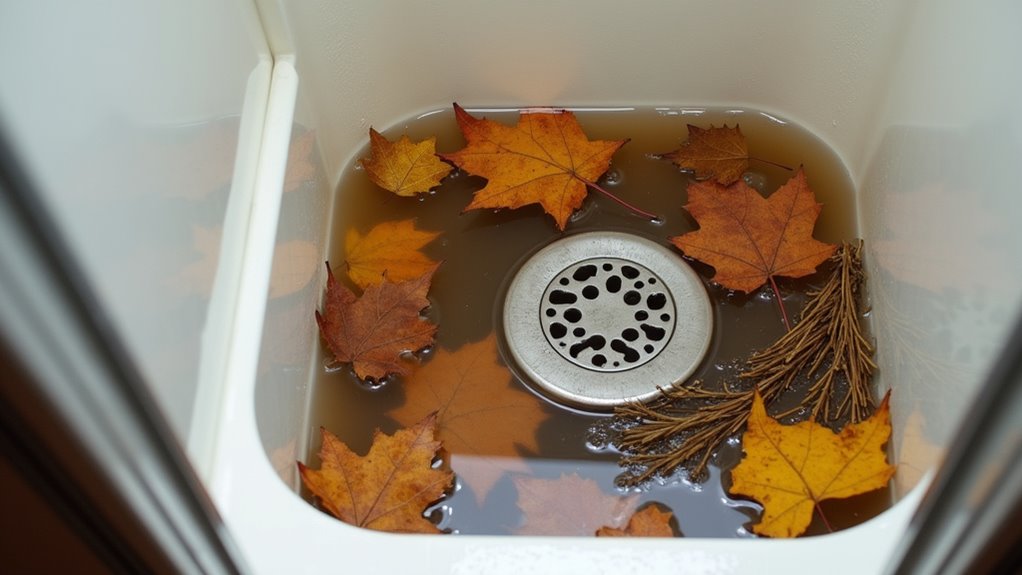
Throughout the year, your RV’s drainage system faces unique challenges from seasonal weather changes. Temperature fluctuations cause materials to expand and contract, which can create cracks in pipes and lead to leaks in your shower drain system.
In winter, you’ll need to protect against freezing temperatures that can burst pipes and damage drainage components. Keeping a weather alert radio in your RV helps monitor approaching winter storms that could affect your plumbing system.
Summer heat accelerates material deterioration and affects pump performance.
Spring storms bring heavy rainfall that can overwhelm your drainage system and introduce debris blockages.
To protect your RV’s shower drain, you’ll need to adjust your maintenance routine seasonally. Insulate pipes for winter, clean drainage systems before spring storms, and regularly inspect for heat-related damage in summer.
Don’t forget that climate change is intensifying these weather patterns, making preventive maintenance even more critical.
Ready to tackle that stubborn RV shower drain? You’ve now got the knowledge to identify and fix the most common drainage problems, from clearing hair clogs to managing your grey water tank. Don’t let a blocked drain ruin your trip – regular maintenance and quick action will keep everything flowing smoothly. Remember: a working shower drain means more time enjoying your RV adventures and less time dealing with plumbing headaches.